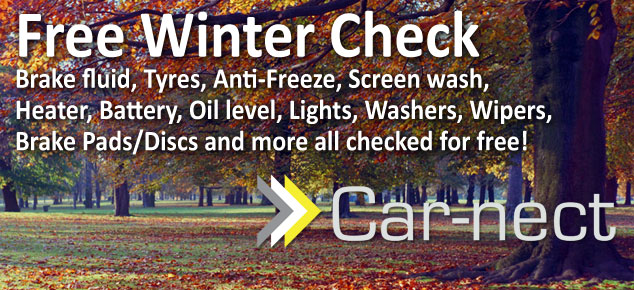1. It is important that your car is properly maintained and it should be serviced annually regardless of mileage. Service schedules can be very confusing so ask your garage to advise you on the most suitable service to meet your requirements, based on mileage, age of the vehicle, usage and to ensure that you do not invalidate any warranty you may have on the car.
2. Provide the Service Team with a written list detailing the symptoms the car is experiencing, when it happens and whether it is an intermittent or permanent fault. Include your contact details for that day.
3. Engine Management faults can be complex and diagnostic terminology often contains jargon which is meaningless to most of us. Request a print-out of the diagnostic test and a brief, simple explanation of the diagnosis.
4. Request a quotation of any repairs necessary including parts, labour & VAT before the work is undertaken.
5. If you are unsure of the condition of your tyres seek the advice of an MOT Tester since they will give you impartial advice and tell you whether the tyres are legal.
MOT 6. You can have your vehicle MOT Tested up to one calendar month before it is due and the time left to run is added on to your new MOT certificate. This is very useful as it allows you ample time to get any repairs carried out if needed.
7. If a vehicle fails the MOT Test on a particular item then a Failure Sheet will be issued and this means that the work must be carried out before an MOT Pass Certificate can be issued.
8. Some issues identified may be advisory items only. i.e. that they will pass an MOT at that time but they will need attention in the near future.
All advisory items are listed either on the pass certificate (if the vehicle has passed the test but with some advisory items to note) or on the failure sheet (if the vehicle has failed the test and there are also some advisory items).
MOT certificates, Advisory Notices and Failure Sheets are now all printed on plain white paper as they are more often used online these days. However, this can make it easy to mislay the paperwork as the forms no longer look official!
Note: if an item has been recorded as an advisory item it does not have to be rectified in order to pass the mot. However, it is good practice to consult your garage’s advice regarding a future repair. Sometimes, it is sufficient to just get it checked in a few months but in other cases replacing a small part before it leads to a bigger, more expensive repair may be prudent.
*To find out more information on MOTs go to the Direct Gov's website (www.direct.gov.uk/en/Motoring)*
GENERAL 9. Do not worry about having to drive your vehicle into the workshop. Park in the car park, hand over your keys and relax. Any reputable garage will use seat covers, floor mats and gloves to ensure that your car stays clean. To find a Trading Standards Approved garage visit their website: www.buywithconfidence.gov.uk.
10. If you are thinking of changing your car seek the advice of a specialist independent garage beforehand and ask if there are any common faults which that particular make & model of car is prone to.


 RSS Feed
RSS Feed

